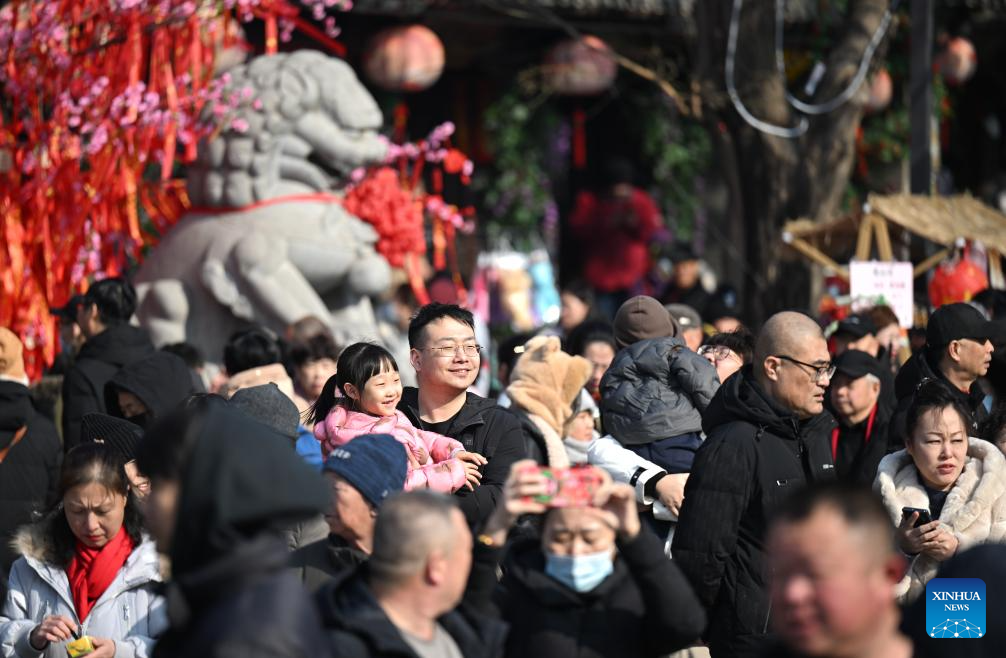
People visit the Yangliuqing ancient town in Tianjin, north China, Feb. 2, 2025. Yangliuqing ancient town is long celebrated for its woodblock new year pictures. These pictures, which usually bear auspicious meanings, flourished during the Ming and Qing dynasties (1368-1911) due to highly developed canal transportation, and were sold to different places in the country.
During Spring Festival holidays, light installations, folk performances, and specialty shops in the town attract large flocks of tourists to enjoy the festive atmosphere there. (Xinhua/Li Ran)
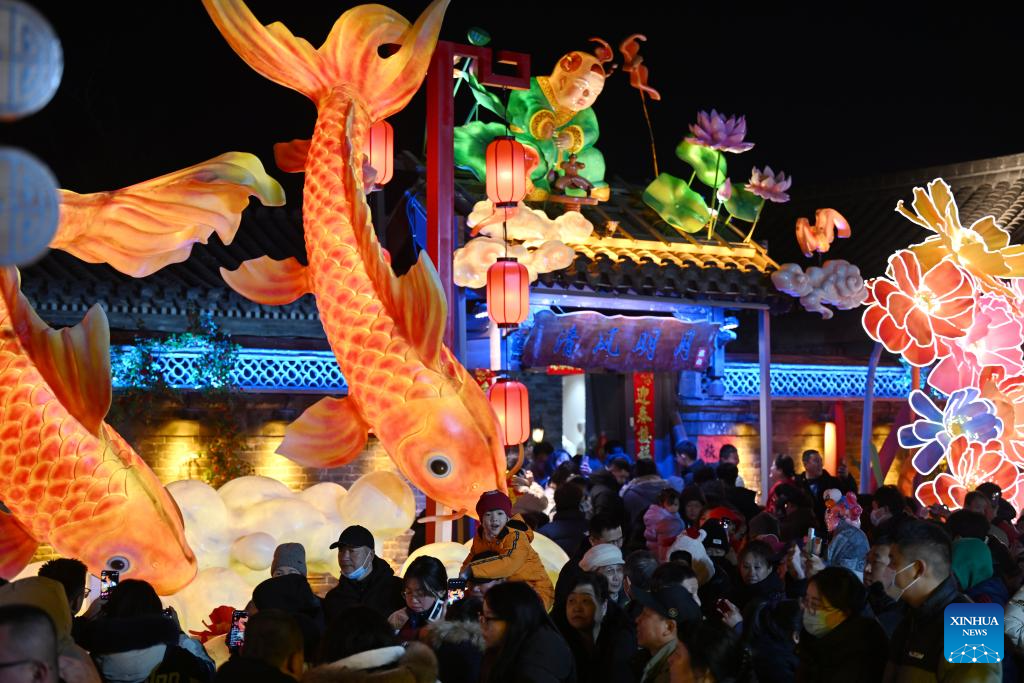
People visit a festive lantern show at the Yangliuqing ancient town in Tianjin, north China, Feb. 1, 2025. Yangliuqing ancient town is long celebrated for its woodblock new year pictures. These pictures, which usually bear auspicious meanings, flourished during the Ming and Qing dynasties (1368-1911) due to highly developed canal transportation, and were sold to different places in the country.
During Spring Festival holidays, light installations, folk performances, and specialty shops in the town attract large flocks of tourists to enjoy the festive atmosphere there. (Xinhua/Li Ran)
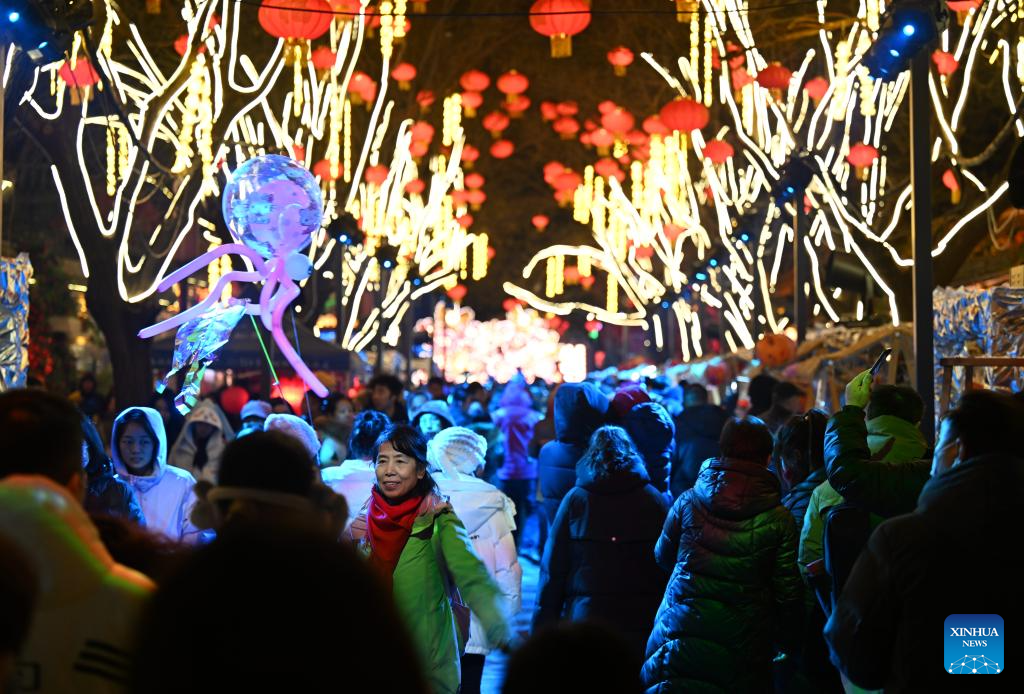
People enjoy the night view at the Yangliuqing ancient town in Tianjin, north China, Feb. 1, 2025. Yangliuqing ancient town is long celebrated for its woodblock new year pictures. These pictures, which usually bear auspicious meanings, flourished during the Ming and Qing dynasties (1368-1911) due to highly developed canal transportation, and were sold to different places in the country.
During Spring Festival holidays, light installations, folk performances, and specialty shops in the town attract large flocks of tourists to enjoy the festive atmosphere there. (Xinhua/Li Ran)
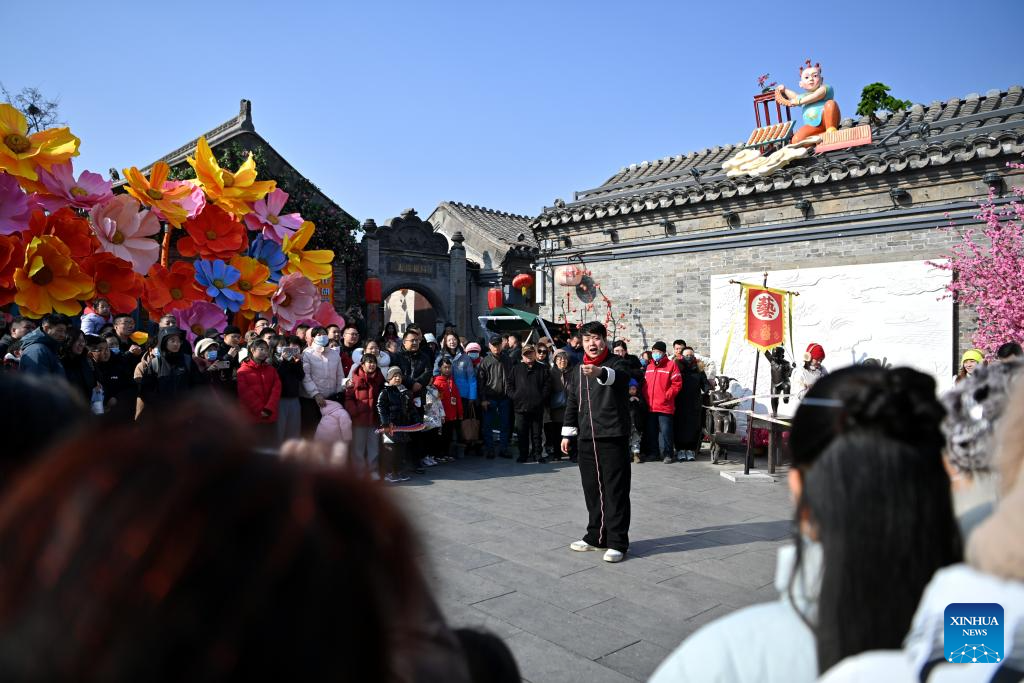
A magician performs at Yangliuqing ancient town in Tianjin, north China, Feb. 2, 2025. Yangliuqing ancient town is long celebrated for its woodblock new year pictures. These pictures, which usually bear auspicious meanings, flourished during the Ming and Qing dynasties (1368-1911) due to highly developed canal transportation, and were sold to different places in the country.
During Spring Festival holidays, light installations, folk performances, and specialty shops in the town attract large flocks of tourists to enjoy the festive atmosphere there. (Xinhua/Li Ran)
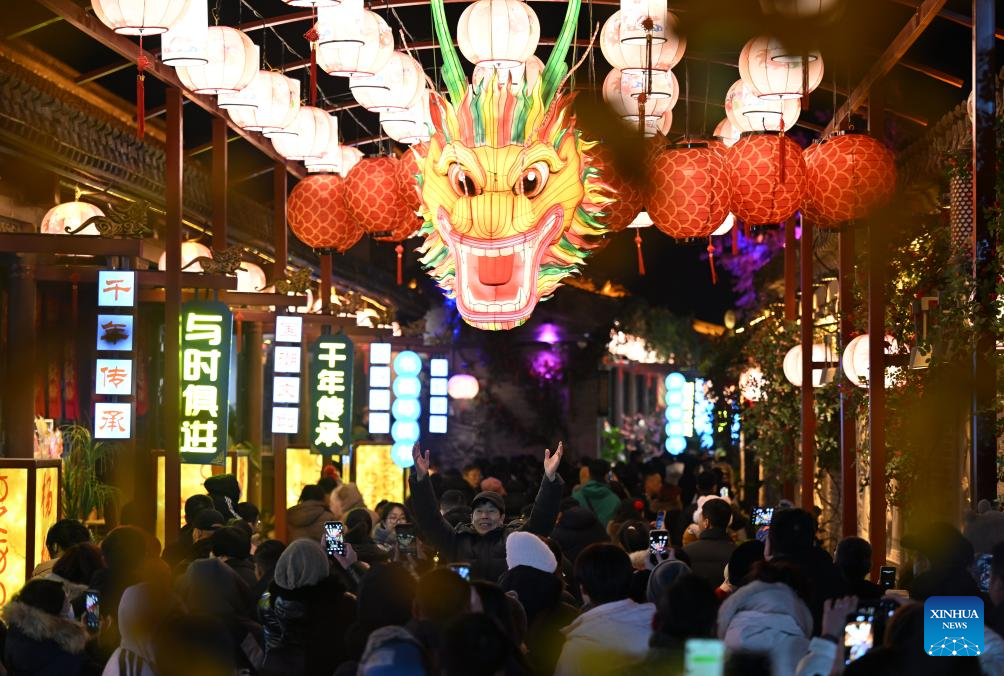
People visit a festive lantern show at the Yangliuqing ancient town in Tianjin, north China, Feb. 1, 2025. Yangliuqing ancient town is long celebrated for its woodblock new year pictures. These pictures, which usually bear auspicious meanings, flourished during the Ming and Qing dynasties (1368-1911) due to highly developed canal transportation, and were sold to different places in the country.
During Spring Festival holidays, light installations, folk performances, and specialty shops in the town attract large flocks of tourists to enjoy the festive atmosphere there. (Xinhua/Li Ran)
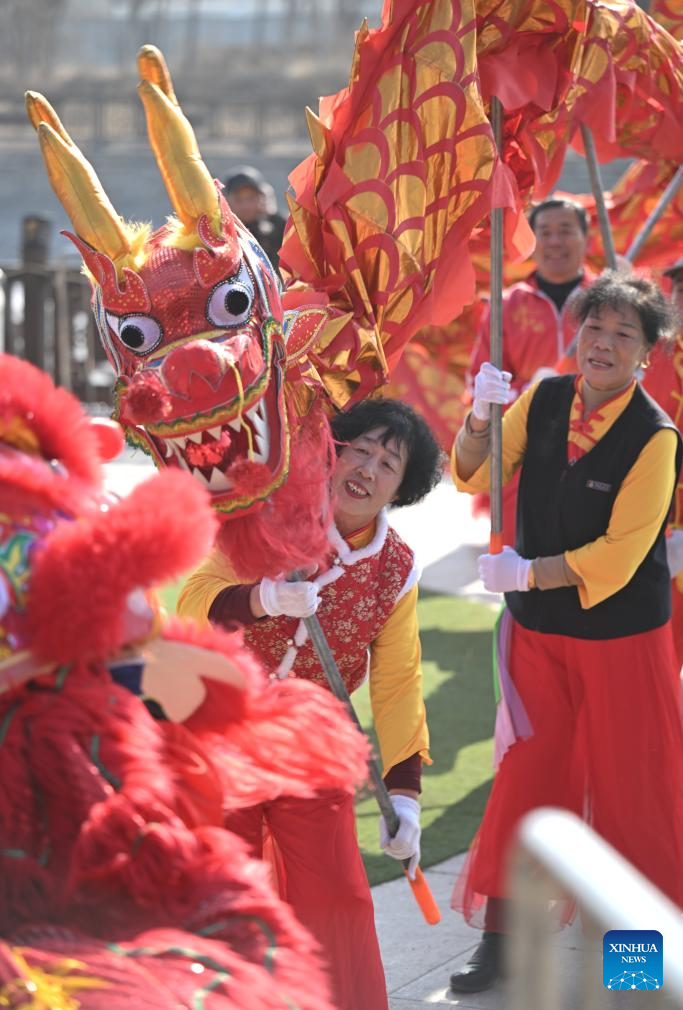
People stage a dragon dance performance at Yangliuqing ancient town in Tianjin, north China, Feb. 2, 2025. Yangliuqing ancient town is long celebrated for its woodblock new year pictures. These pictures, which usually bear auspicious meanings, flourished during the Ming and Qing dynasties (1368-1911) due to highly developed canal transportation, and were sold to different places in the country.
During Spring Festival holidays, light installations, folk performances, and specialty shops in the town attract large flocks of tourists to enjoy the festive atmosphere there. (Xinhua/Li Ran)
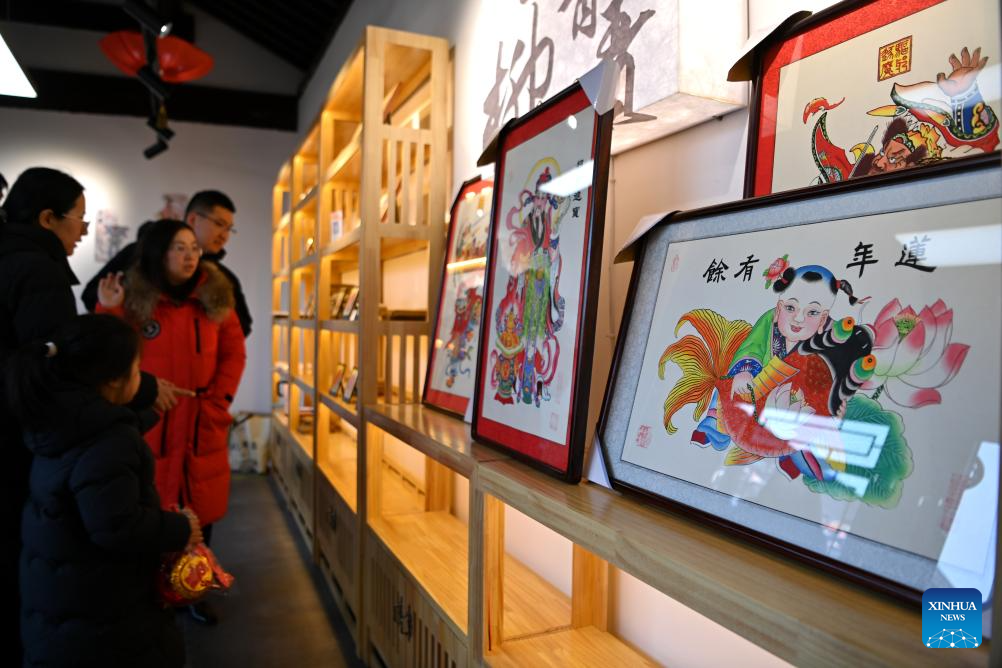
People view woodblock new year pictures at Yangliuqing ancient town in Tianjin, north China, Feb. 2, 2025. Yangliuqing ancient town is long celebrated for its woodblock new year pictures. These pictures, which usually bear auspicious meanings, flourished during the Ming and Qing dynasties (1368-1911) due to highly developed canal transportation, and were sold to different places in the country.
During Spring Festival holidays, light installations, folk performances, and specialty shops in the town attract large flocks of tourists to enjoy the festive atmosphere there. (Xinhua/Li Ran)
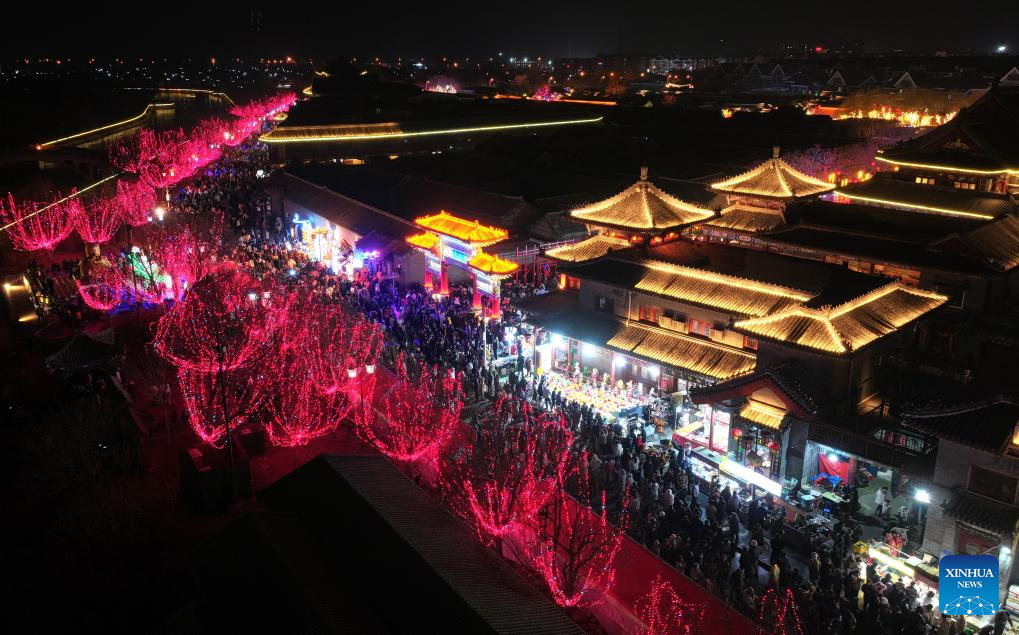
This aerial photo taken on Feb. 1, 2025 shows a night view of the Yangliuqing ancient town in Tianjin, north China. Yangliuqing ancient town is long celebrated for its woodblock new year pictures. These pictures, which usually bear auspicious meanings, flourished during the Ming and Qing dynasties (1368-1911) due to highly developed canal transportation, and were sold to different places in the country.
During Spring Festival holidays, light installations, folk performances, and specialty shops in the town attract large flocks of tourists to enjoy the festive atmosphere there. (Xinhua/Li Ran)
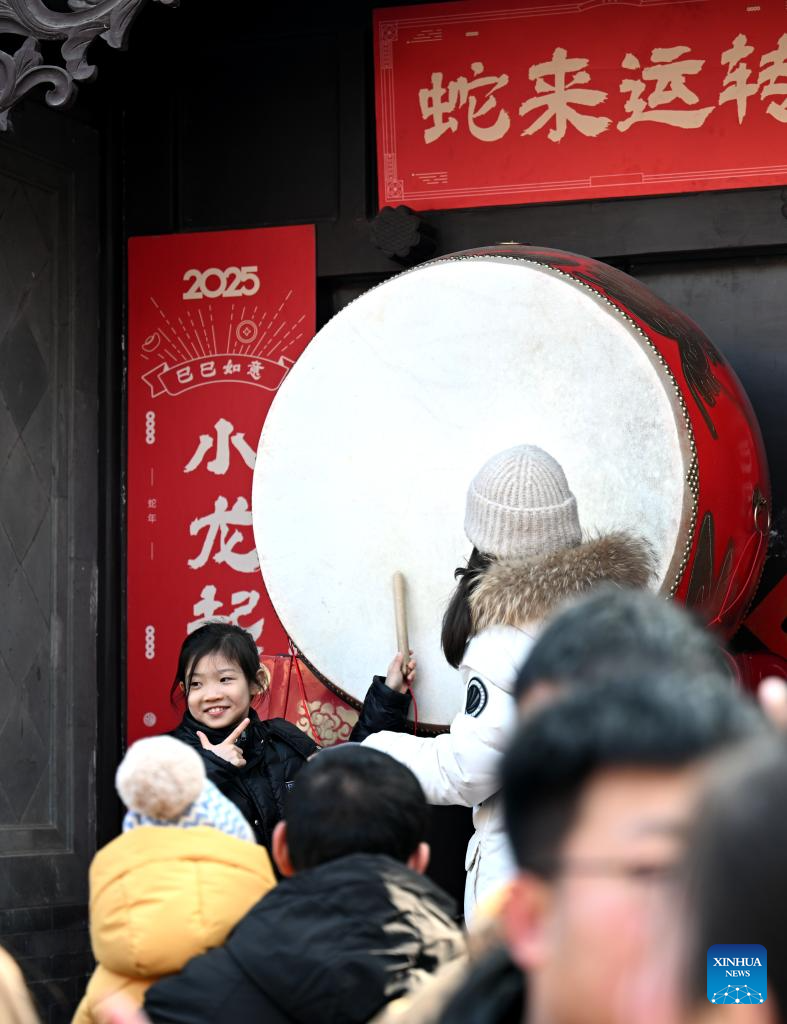
Tourists hit the drum for good fortune at Yangliuqing ancient town in Tianjin, north China, Feb. 2, 2025. Yangliuqing ancient town is long celebrated for its woodblock new year pictures. These pictures, which usually bear auspicious meanings, flourished during the Ming and Qing dynasties (1368-1911) due to highly developed canal transportation, and were sold to different places in the country.
During Spring Festival holidays, light installations, folk performances, and specialty shops in the town attract large flocks of tourists to enjoy the festive atmosphere there. (Xinhua/Li Ran)
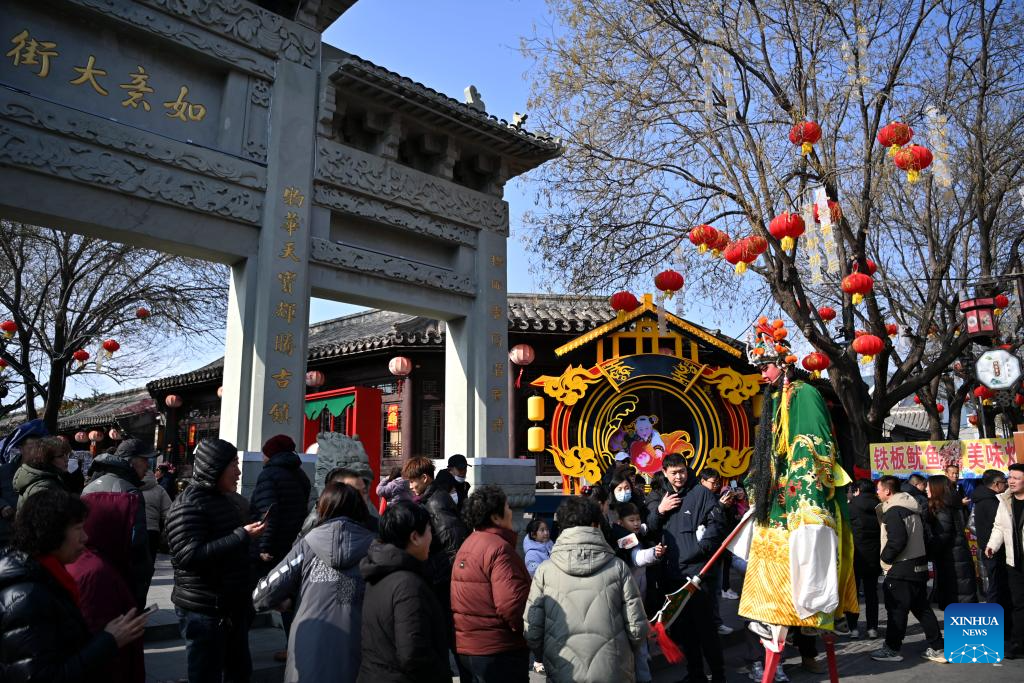
A stilt artist performs at the Yangliuqing ancient town in Tianjin, north China, Feb. 2, 2025. Yangliuqing ancient town is long celebrated for its woodblock new year pictures. These pictures, which usually bear auspicious meanings, flourished during the Ming and Qing dynasties (1368-1911) due to highly developed canal transportation, and were sold to different places in the country.
During Spring Festival holidays, light installations, folk performances, and specialty shops in the town attract large flocks of tourists to enjoy the festive atmosphere there. (Xinhua/Li Ran)
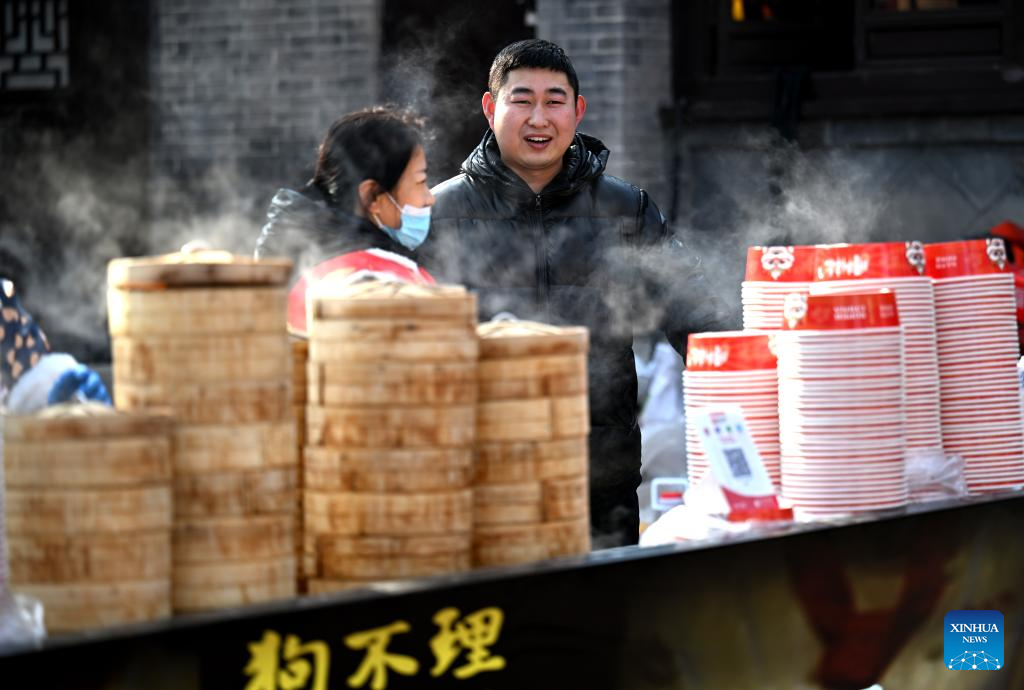
Vendors sell specialty snacks at the Yangliuqing ancient town in Tianjin, north China, Feb. 2, 2025. Yangliuqing ancient town is long celebrated for its woodblock new year pictures. These pictures, which usually bear auspicious meanings, flourished during the Ming and Qing dynasties (1368-1911) due to highly developed canal transportation, and were sold to different places in the country.
During Spring Festival holidays, light installations, folk performances, and specialty shops in the town attract large flocks of tourists to enjoy the festive atmosphere there. (Xinhua/Li Ran)



